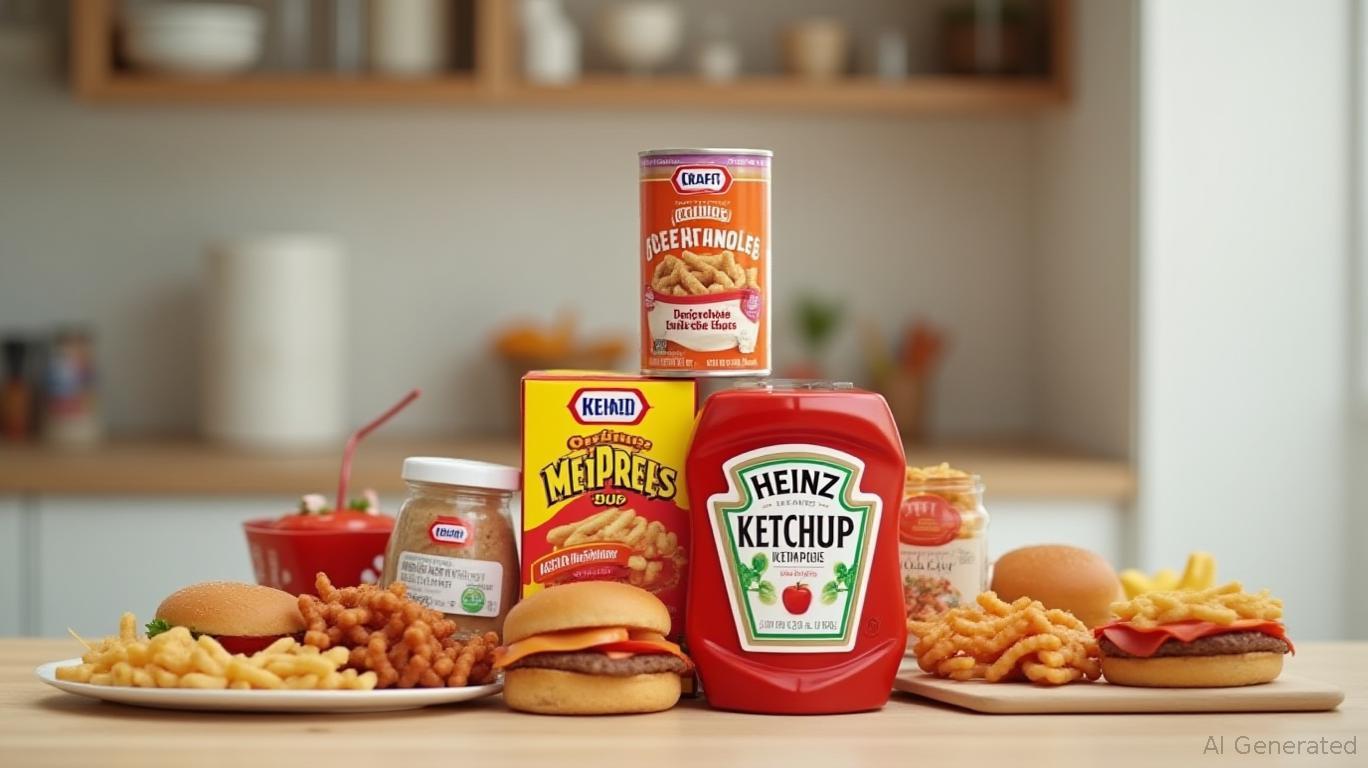Kraft Heinz's Dividend Dilemma: High Yield vs. Structural Stagnation
Kraft Heinz (KHC), the $26 billion food giant, faces a critical question for income investors: Does its 5.7% dividend yield compensate for stagnant revenue, declining profitability, and a lack of growth? With net sales down 6.4% in Q1 2025 and adjusted EPS falling 10%, the company's financial health is under scrutiny. This analysis explores whether its dividend—a cornerstone of its shareholder returns—is a sustainable income source or a trap masking deeper problems.
The Revenue Slide and Cash Flow Crossroads
Kraft Heinz's struggles are clear. Its Q1 2025 results showed a 5.6% drop in volume/mix, driven by declining demand for core brands like Lunchables and shifts in Easter timing. Organic sales fell 4.7%, with pricing gains (0.9%) failing to offset the slump. While free cash flow rose 1% to $500 million due to working capital efficiencies, operating cash flow dropped 6.6% to $700 million, pressured by inventory build-ups and tax headwinds.
The dividend payout ratio, at 67% of net income, appears elevated. However, this excludes a $2.3 billion 2024 goodwill impairment charge (a non-cash item) related to Lunchables. Adjusted for this, the payout ratio drops to 52%–53%, which management deems sustainable. Yet this adjustment highlights a critical flaw: KHC's earnings are increasingly dependent on accounting maneuvers, not operational strength.

Dividend Safety vs. Growth Potential
KHC's dividend has not grown for years, with a 0% 1-year, 3-year, and 5-year growth rate. Historically, its 5-year average dividend growth was -6.2%, reflecting cuts in prior years. While the current $1.60 annual dividend is covered by adjusted earnings, the lack of growth raises questions. Income investors must ask: Can a company with declining sales and margin pressures sustain a dividend that relies on cost-cutting, not top-line health?
Compare this to U.S. Bancorp (USB), a financial peer offering a 4.9% yield but with consistent growth. USB's Q1 2025 net income rose to $1.71 billion, with a 49% payout ratio and 4.2% average annual dividend growth over five years. Its revenue increased 3.6%, and its CET1 capital ratio hit 10.8%, signaling financial resilience. USB's disciplined cost management (efficiency ratio of 60.8%) contrasts sharply with KHC's reliance on brand turnarounds.
The Turnaround Gamble
Kraft Heinz's management has emphasized “cost efficiencies” and “brand revitalization,” including a $2 billion plan to boost innovation. Yet its history of underperformance—such as the 2019 $15.4 billion impairment write-down—casts doubt. The company's shareholder yield (dividends plus buybacks) is 9.1%, but 2.9% comes from buybacks, which reduce shares but do not address core issues like declining consumer preferences.
The key risk? A dividend reliant on stagnant free cash flow (projected flat in 2025) and a 26% tax rate (up from 24% in 2024) due to global minimum tax rules. If sales continue to decline,
may face a choice: cut the dividend or risk overleveraging its balance sheet.Investment Implications
- For Income Investors: KHC's 5.7% yield is tempting, but its lack of growth and reliance on cost cuts make it a high-risk bet. Contrast this with U.S. Bancorp's stable 4.9% yield, supported by earnings growth and strong capitalization.
- For Turnaround Plays: KHC's valuation (10x forward P/E) may appeal to those betting on a recovery. However, the turnaround requires not just cost discipline but also winning back market share—no easy feat in a commoditized food sector.
- Structural Warnings: The dividend's sustainability hinges on management's ability to reverse sales trends. If Lunchables and other brands continue to decline, even a 52% payout ratio may come under pressure.
Conclusion: A Dividend with an Expiration Date?
Kraft Heinz's dividend is a double-edged sword. For now, its yield offers income, but the structural issues—declining sales, margin pressures, and reliance on cost-cutting—suggest risks are rising. U.S. Bancorp exemplifies a safer income play, with growth and stability. Investors should treat KHC's dividend as a short-term opportunity, not a long-term solution. Unless the company revives its brands and reverses revenue declines, this high yield may soon become a trap.
Final Advice: Proceed with caution. KHC's dividend is a lifeline for income seekers but lacks the growth or financial rigor to justify a buy-and-hold strategy. Consider U.S. Bancorp for safer income exposure—or wait for a clearer turnaround signal from KHC.
This analysis combines financial metrics, industry context, and strategic comparisons to assess dividend sustainability. The conclusion underscores the trade-off between yield and risk in a stagnant-growth environment.

Comments
No comments yet